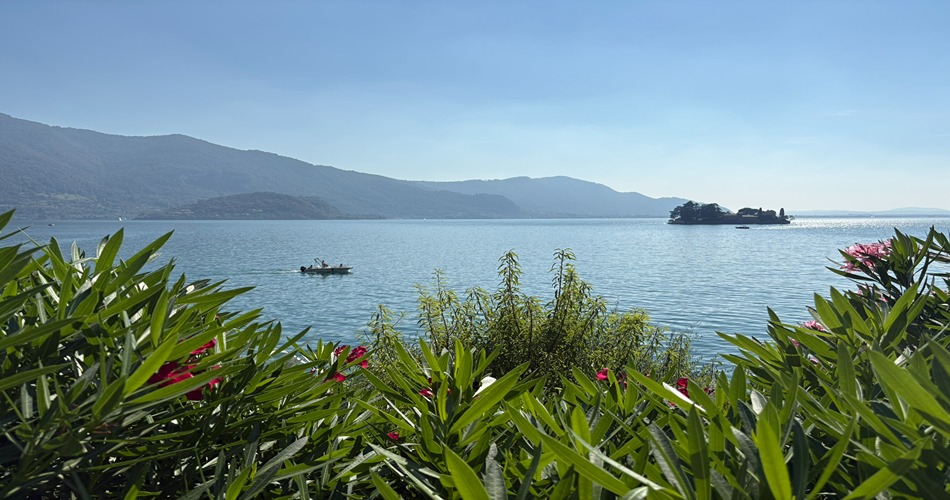Resting on the shores of Lake Michigan, Manitowoc and Two Rivers abound with attractions, including museums that spotlight their history as Great Lakes ports
By Randy Mink, Senior Editor
The sound of waves crashing against the rocks outside my window set the tone for my visit to the neighboring towns of Two Rivers and Manitowoc, lulling me into dreamland when bedtime rolled around. Hugging the breezy shore of Lake Michigan, the Lighthouse Inn made a perfect base camp for soaking in the lore of the Great Lakes.
The twin waterfront communities, moreover, provide the ideal setting for getting acquainted with eastern Wisconsin’s maritime heritage. Connecting the towns, the six-mile paved Mariners Trail, enhanced by gardens, sculptures, beaches and picnic areas, offers walkers, runners and bikers the longest, continuous scenic view of Lake Michigan in Wisconsin. In addition, the area, 80 miles north of Milwaukee, claims three historic lighthouses and a pair of great maritime museums.
This Manitowoc Museum Boasts a WWII Submarine
The first-rate Wisconsin Maritime Museum, located on the Manitowoc River in downtown Manitowoc, is one of the largest such museums in the U.S.
Focusing on the Great Lakes and Wisconsin, the museum showcases antique boats, ship models and nautical artifacts, and spotlights Manitowoc’s shipbuilding history. In the 1920s every business along the river was a shipbuilding company or some kind of maritime business. Every type of vessel, from wooden sailing ships to World War II submarines, landing craft and minesweepers, was manufactured in Manitowoc. The city today is a working port, and one company continues to build custom yachts.
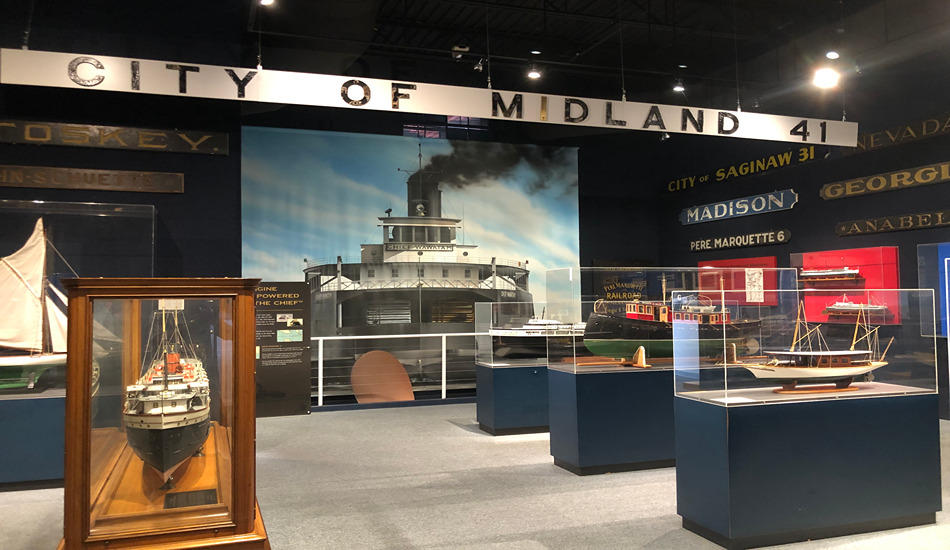
Wisconsin Maritime Museum, Manitowoc
In the shipwrecks gallery, museum-goers learn how the ships met their doom and see recovered artifacts. A diorama illustrates the tragic story of the Edmund Fitzgerald, a cargo ship that sank in a fierce gale on Lake Superior on November 10, 1975.
One exhibition focuses on the USS Cobia, a restored WWII submarine docked on the Manitowoc River. A museum highlight, the National Historic Landmark is open for tours. Before going outside to negotiate your way through the sub’s cramped quarters, it’s best to watch the movie and view oral histories of submarine crew members. Adventurous types can enter a dark room where an intense, five-minute experience simulates torpedo firing.
Walking through the USS Cobia itself, visitors see the torpedo launchers, bunk room, radio room, officers’ quarters, mess hall and engine room. One of the best preserved subs in the country, the USS Cobia saw six war patrols after being launched in 1943 in Groton, Connecticut.

Touring the USS Cobia submarine is not for the claustrophobic.
Plaques along the riverfront memorial walk commemorate each of the 28 WWII submarines built for the U.S. Navy by Manitowoc Shipbuilding Company, which at one point employed 7,000 workers, including 600 women. Twenty-five of the Manitowoc subs saw action, sinking 132 enemy ships and rescuing 76 American flyers who had been shot down.
The Sub BNB overnight program can accommodate up to 65 guests in the Cobia’s bunks. The vessel is heated and air-conditioned, and a light breakfast is included.
Lake Michigan Car Ferry Serves Manitowoc, Wisconsin
Another fixture on the Manitowoc waterfront is the terminal for the Badger, a car ferry that crosses Lake Michigan twice a day, from mid-May to early October, between Manitowoc and Ludington, Michigan. The last coal-fired steamship still in operation in the U.S., the Badger carries up to 600 passengers and 160 vehicles, including trucks, tour buses. RVs and farm equipment. Named for the University of Wisconsin athletic teams, the Badger was designed to transport rail cars when it entered service in 1953. The waterfront’s statue of a badger, the official state animal, makes a good photo op.
During the four-hour, 60-mile crossing, Badger passengers spend their time relaxing on deck, eating and drinking, playing bingo in the main lounge and watching movies in the theater. Thirty-two private staterooms, equipped with sink, toilet and twin beds, provide a place to rest. You lose sight of land after 50 minutes and begin to see it again 50 minutes before arrival at the destination.
Offering a shortcut across Lake Michigan, the Badger saves travelers more than 300 miles of highway driving. Built in Sturgeon Bay, Wisconsin for Great Lakes sailing, the steamship is a National Historic Landmark, the only mobile one besides San Francisco’s cable cars.
Two Rivers Preserves Its Maritime Past
In Two Rivers, Rogers Street Fishing Village comprises a collection of historic sheds and other buildings on the site of century-old fishing yards on the East Twin River. Visitors can view exhibits on commercial fishing, shipwrecks and the Native Americans who first fished in Lake Michigan. They can explore the inside of a fishing tug and climb up the 1886 North Pierhead Lighthouse, one of the few authentic wooden lighthouses left on the Great Lakes. Transplanted from its original location, the beacon guided ships into the harbor until 1969.

Historic lighthouse at Rogers Street Fishing Village in Two Rivers, Wisconsin
The large modern building on the grounds houses the Great Lakes Coast Guard Museum, which has artifacts from the present-day Coast Guard station and U.S. Life-Saving Service station that preceded it.
Historic Home Showcases Artistic Treasures
Manitowoc’s Rahr-West Art Museum features 19th, 20th and 21st century art in the beautiful Queen Anne-style mansion of the Rahr family, who made their fortune in brewing, malting and other businesses. The Victorian home was donated to the city in 1941. Exhibition wings were added in 1976 and 1986 thanks to donations by John and Ruth West of the Manitowoc Shipbuilding Company and the Rahr Foundation.
Works on display include the 1965 Jug, a ceramic jug decorated by Pablo Picasso; the Andy Warhol silver print 59th Street Bridge Tramway, a series of stitched photographs; and Georgia O’Keeffe’s Birch and Pine Tree #2, a 1925 oil on canvas painted while she was vacationing in the Lake George, New York area. Paintings also feature scenes of Manitowoc by local artists. Decorative objects in the house, including furniture and a large trunk, have direct connections to the Rahrs and the Vilas family, who built the house in the early 1890s.
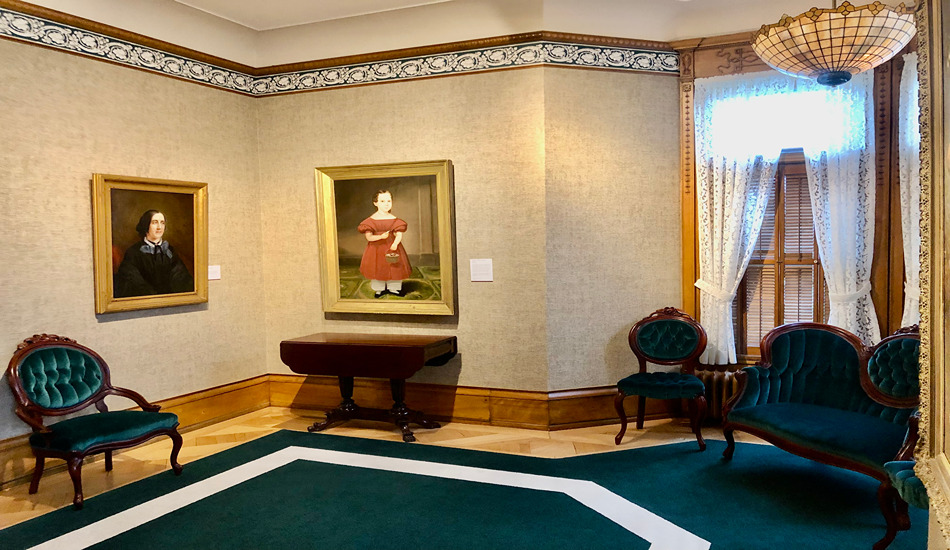
Rahr-West Art Museum in Manitowoc occupies a Victorian mansion.
An information panel in the museum’s front yard and the Sputnik Strikes Manitowoc exhibit inside recall the excitement on September 5, 1962, when a piece of the Russian satellite spacecraft Sputnik IV crashed just outside the mansion, landing in the middle of North Eighth Street. A replica of the 20-lb., 14-oz. metal fragment is on display in a glass case. A brass ring on the street’s center lines indicates where the chunk made a 3-inch-deep hole. Additional fragments were found as far as 700 feet away. The city’s Sputnikfest celebrates all things sci-fi the second weekend in September.
Printing History and Wisconsin Agriculture
In Two Rivers, Hamilton Wood Type & Printing Museum preserves the legacy of Hamilton Manufacturing Company. Founded in 1880, it was once the largest wood type producer in the country, when everything was letterpress printed. Wood type and letterpress prints are still being created in this working museum, which has the world’s largest collection of such type and the tools to use it. Group tours are available, and letterpress printing and bookmaking workshops are offered for groups of 6-12.
Leading the list of agritourism hot spots in the Manitowoc area is Farm Wisconsin Discovery Center, a massive red barn just off Interstate 43. Visitors can witness the birth of a calf and explore interactive exhibits that explain the origins of our food. The on-site Wisconsin Cafe specializes in farm-to-table fare using locally sourced ingredients from America’s Dairyland.
LondonDairy Alpaca Ranch in Two Rivers offers tours that involve feeding and posing with the animals and learning about their coveted fibers. The store sells alpaca goods and South American wines. Group wine tastings can be arranged.
Dairy Delights in Manitowoc and Two Rivers
In the little shop at Pine River Dairy, just outside Manitowoc, you can view the butter-making process, buy freshly made butter and choose from more than 250 varieties of Wisconsin cheese. Butter flavors include strawberry, sea salt caramel and bacon & chive. Ice cream cones, using locally made Cedar Crest ice cream, are only 25 cents.
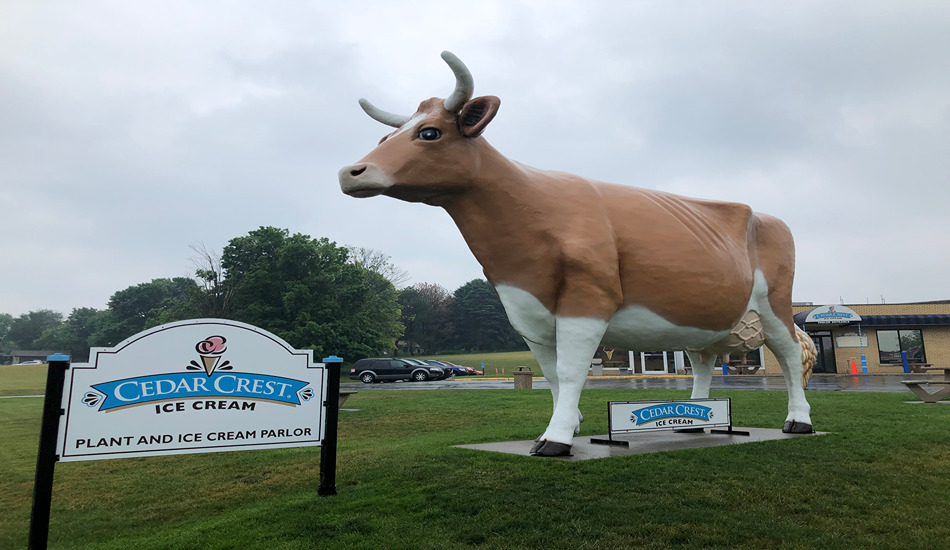
Bernice the Big Cow greets visitors to the Cedar Crest plant and ice cream parlor in Manitowoc.
Manitowoc is home to the Cedar Crest Ice Cream Plant and Parlor, open from March to November. The store offers 36 flavors of factory-fresh ice cream and a tempting menu of sundaes, shakes and malts. Greeting guests on the expansive front lawn is Bernice the Big Cow, a giant brown fiberglass statue that invites selfies.
Cedar Crest is one of the Midwest’s largest ice cream distributors; its products can be found in grocery stores and scoop shops across the region. Popular flavors include:
- Mississippi Mud, a mocha-flavored ice cream with crushed chocolate sandwich cookies and chocolate fudge swirl
- Sea Turtle, chocolate ice cream with sea salt caramel ribbon and roasted pecans
- Pothole Mackinaw Island Fudge, dark chocolate ice cream blended with brownies and swirled with thick fudge ribbons.
Speaking of frosty treats, Two Rivers claims to be the birthplace of the ice cream sundae. A historical marker in Central Park, in front of City Hall on the main thoroughfare, explains that local soda fountain owner Edward Berner first served one in 1881 when a customer asked him to top his dish of ice cream with chocolate sauce, hitherto used only for ice cream sodas. The new offering soon became popular but at first was sold only on Sundays.
Historic Washington House, a former 1850s inn and now the town’s visitor center, is the perfect place to have a sundae. Its soda fountain features pictures and relics from Ed Berner’s store. A nearby building sports a Berner’s mural titled “Celebrate the Sundae!”
For more goodies in Two Rivers, try Renee’s Factory Store for her small-batch gelato and ice cream, homemade chocolates and 28+ flavors of gourmet popcorn. At Scream ’N Conuts you can have your ice cream in a sugar-dusted donut cone.
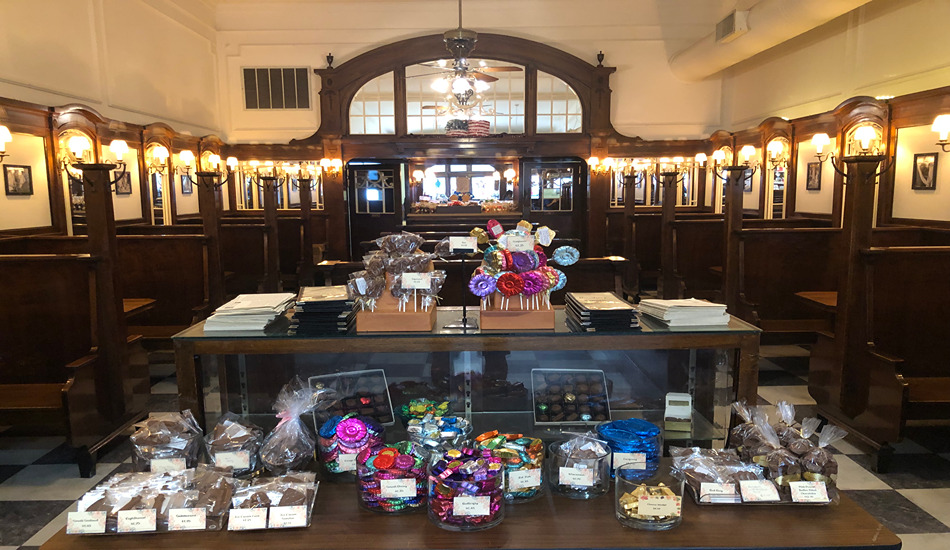
Beerntsen’s Confectionary in downtown Manitowoc
In downtown Manitowoc, step back in time at Beerntsen’s Confectionary. Founded in 1932, the old-fashioned shop makes its own chocolate candies, hard candies, suckers, caramel corn, peanut brittle and frozen custard. The chocolates are dipped by hand, and all the peanuts, almonds, cashews and pecans are freshly roasted. Among the dozens of chocolate treats in the vintage candy cases are orange peels, pretzels, malted milk balls, bridge mix and cigars in foil. There are toffee squares, gummi Army men and jellied fruit slices. Novelties include chocolates molded in the shape of sailboats, anchors, lighthouses and various animals.
Beerntsen’s wood-cloaked dining room, lined with candy-making photos from days gone by, brims with nostalgia. It offers a lunch menu as well as ice cream creations.
Lakeside Hotel with Nautical Trappings
After an action-packed day of sightseeing and chowing down, the 66-room Lighthouse Inn makes a good refuge to kick back and relax. My nautically themed room had lighthouse and sailing ship artwork, a desk lamp with a lighthouse base and a shower curtain with a lighthouse-and-sailboat pattern.
Equally atmospheric were Water’s Edge Restaurant and Gull’s Nest cocktail lounge, cozy spots sporting an aquarium, lobster traps, various marine paraphernalia and, best of all, picture windows framing the surf-swept shore of Lake Michigan, Two Rivers’ awesome front yard.
For more travel ideas on Wisconsin and the Midwest, be sure to Subscribe to Leisure Group Travel magazine for FREE.
Lead Photo – Tickets to the Wisconsin Maritime Museum in Manitowoc include admission to the USS Cobia, a World War II submarine docked on the Manitowoc River.
All photos by Randy Mink





